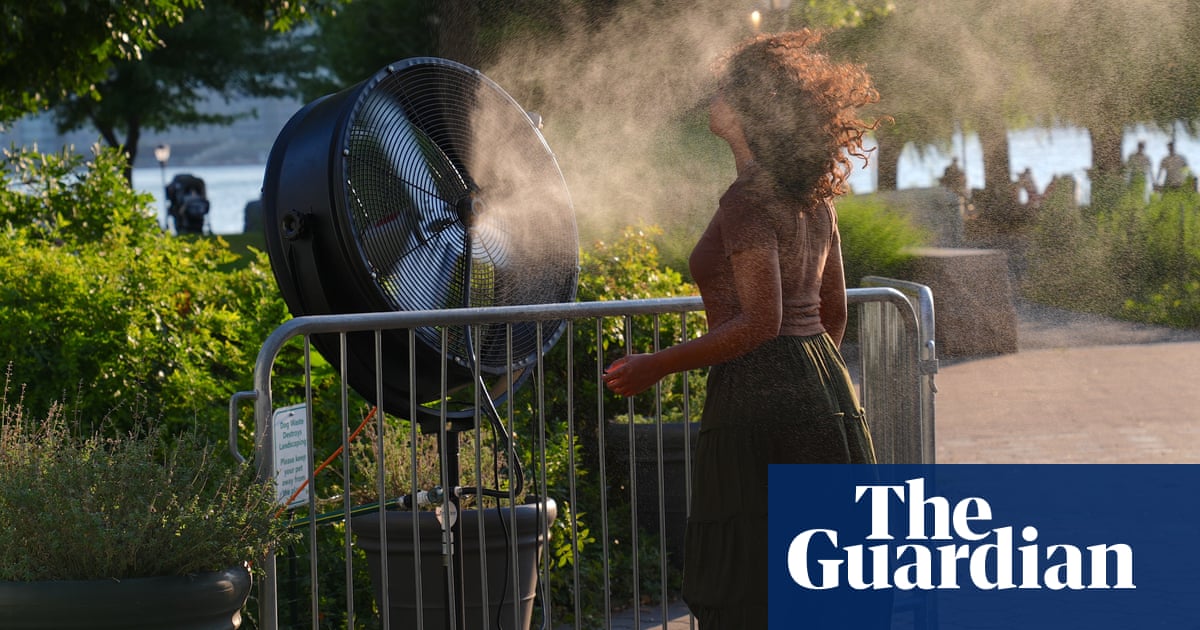Urban heat island effect making temperatures 8F hotter in 65 US cities – study | Extreme heat

Almost 34 million people in 65 major US cities, or 15% of the country’s population, are experiencing temperatures that are 8F higher than their surrounding areas, according to a new analysis from Climate Central, a non-profit research group.
That is largely due to built environments like parking lots and asphalt sidewalks, and a lack of trees, that contribute to what’s known as the urban heat island effect.
The research found the urban heat island effect was strongest in New York City, where the built environment can push temperatures more than 9F higher than nearby areas.
The study, which comes as extreme heat is blistering through the US, putting more than 146 million people under advisories, illustrates how many are enduring even higher temperatures due to the way their cities were built.
“Brick, a lot of pavement, taller buildings that obstruct air flow and population density is going to bring heat into the city,” said Jen Brady, senior data analyst at Climate Central who authored the report.
Throughout the day, these hard surfaces retain solar radiation instead of expelling it. As a result, extreme heat becomes so much more concentrated in cities compared with rural surrounding areas.
“As outside air cools down, that very dense material that’s absorbed the heat starts to re-release that heat into the ambient environment,” said Vivek Shandas, professor of climate adaptation at Portland State University. “Those heat islands actually end up staying hotter for longer periods of time in the city.”
Chicago, Philadelphia, Houston, San Diego, Dallas and Los Angeles are home to at least 1 million people who experience 8F of additional heat, with New York City having the highest disparity of 9.65F. That means that, on average, a 90F day in New York City could have been only 80F if the built environment didn’t have heat-amplifying characteristics.
“We built a lot of these older cities to keep us warm. But now we’re dealing with heat, and that’s the challenge,” Brady said. “In the cities, you have more surface to retain all this heat and hold on to it.”
For some 145,000 people who live in the most severe urban heat islands, built infrastructure can elevate temperatures by 12F or more. These disparities can be felt from one part of the city to another, with people of color and low-income residents bearing the brunt of heat.
In the 1930’s, a federal policy known as “redlining” delineated neighborhoods where people of color lived as “too risky”.
“Those areas really got forgotten by a lot of the planners, and as their land values went down, big developments like the freeways or big box stores would go to those areas,” said Shandas. “What we end up seeing is this vicious cycle of how a federally codified policy from the 1930s has a long legacy effect to what we’re seeing today. The communities that live around these areas are the ones who face it worst when a heatwave comes through.”
Some of the ways to reduce the impact of heat include planting trees and shrubs along streets and roadways. Converting asphalt-heavy infrastructure like parking lots into parks and green spaces can be essential in creating additional shade, while allowing the sun’s radiation to dissipate more quickly.
“What we’re finding is that a neighborhood that has a larger amount of trees tends to be about 15 degrees cooler than a neighborhood that doesn’t have that same tree canopy,” Shandas said.
Painting roadways and rooftops a lighter color can also help with absorbing less heat.
Source link




